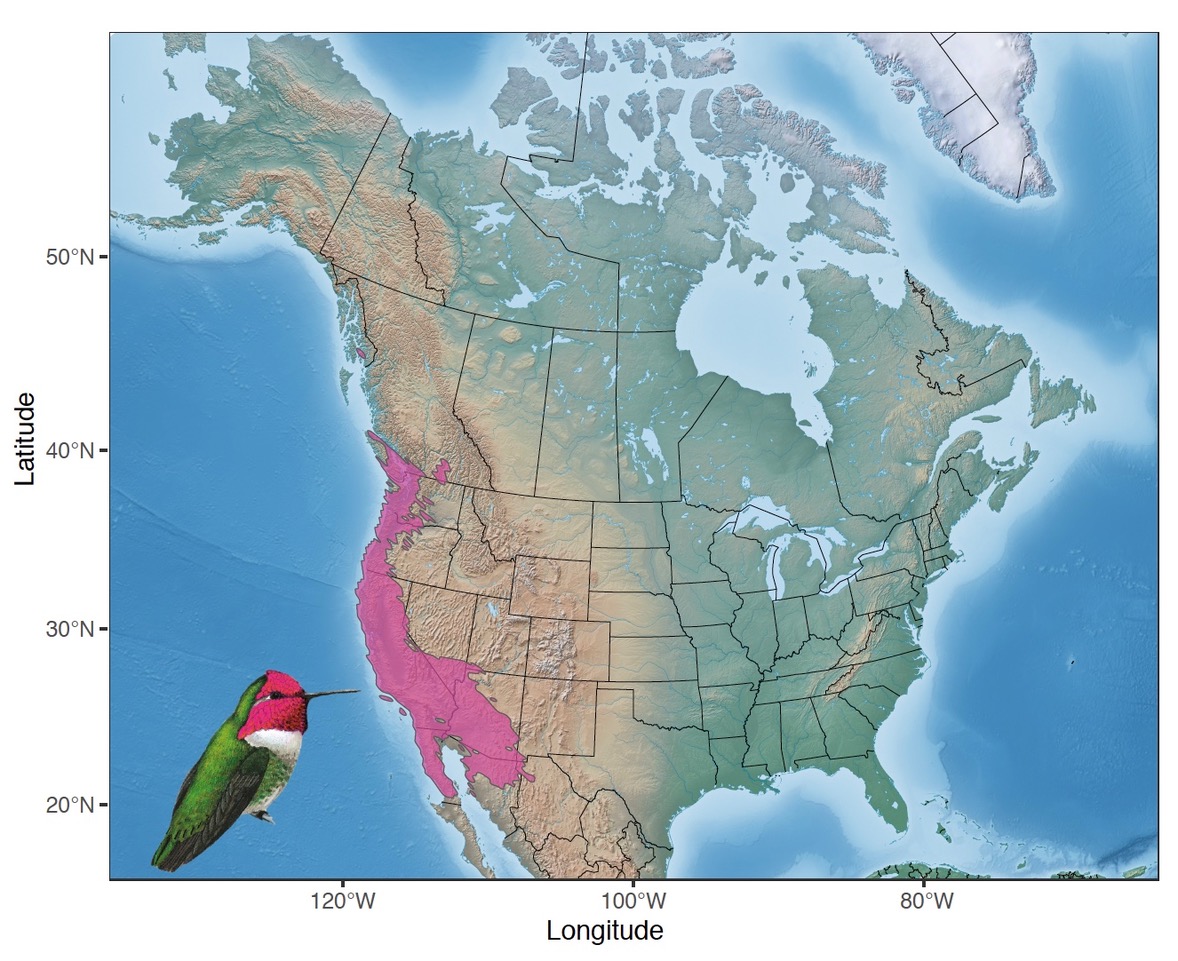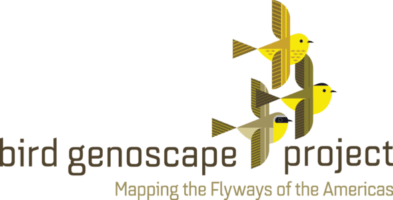Anna’s Hummingbird
In the early 1900’s, the breeding range of the Anna’s Hummingbird (Calypte anna) was largely confined to Baja California, Mexico and California. Over the last century however, this species has dramatically expanded its range to the north and east, now found as far north as British Columbia and are year-round residents in the pacific region of the United States. The likely cause for this range expansion is the increased use of ornamental plants and feeders. In collaboration with Lisa Tell from UC Davis, we collected samples to construct a genoscape for Anna’s Hummingbird, which will help us understand how and why this range expansion occurred. Anna’s Hummingbird is also a species that occasionally causes conflict when it nests on structures, delaying construction projects. For that reason, we are partnering with the California Department of Transportation to delineate population boundaries across the California range of the species.
Read below to learn about our work constructing the Anna’s Hummingbird genoscape:
Adams NE, Bandivadekar RR, Battey CJ, Clark W, Epperly K, Klicka J, Ruegg K, Tell LA, RA Bay. 2023. Widespread gene flow following range expansion in Anna’s hummingbird. Molecular Ecology: DOI: 10.22541/au.166505052.20953845/

Genoscape of Anna’s Hummingbird. Conservation units identified using SNP-based genetic markers. The single genetically distinct popultion in pink represents the ancestry results from the STRUCTURE analysis. See below for details of samples used. Anna’s Hummingbird Image by © Birds of the World
Utilized Anna’s Hummingbird Samples
Explore the map below to see when, where, and who collected the samples to build the genoscape.
